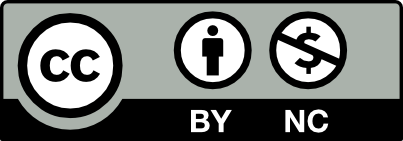Submissions
Submission Preparation Checklist
As part of the submission process, authors are required to check off their submission's compliance with all of the following items, and submissions may be returned to authors that do not adhere to these guidelines.- The submission has not been previously published, nor it is submitted to another journal for consideration (or an explanation has been provided in Comments to the Editor).
- The submission file is in OpenOffice, Microsoft Word, or RTF document file format.
- Where available, URLs for the references have been provided.
- The text is single-spaced; uses a 12-point font; employs italics, rather than underlining (except with URL addresses); and all illustrations, figures, and tables are placed within the text at the appropriate points, rather than at the end.
- The text adheres to the stylistic and bibliographic requirements outlined in the Author Guidelines.
Articles
Section default policy
SI-AI
Special Issue Guide SIG
Journal of Solar Energy and Sustainable Development (JSESD) welcomes publication of Conferences’ Special Issues (CSIs) as well as regular Special Issues (SIs) on specific topics, with the aim of raising awareness and discussing latest topics on research and development in the field of renewable energy (RE).
JSESD invites proposals for special issues (SIs). SIs should identify a specific topic or discipline, and a range of themes that might be addressed within the scope of JSESD in a specific area. JSESD value research that is innovative and high in originality and that engages with contemporary challenges to RE sources and sustainable development related to one of the themes of the journal. The Editorial Board (EB) is keen to attract special issue proposals that highlight innovation and emerging issues in the field, and the medium- to long-term impact of renewable energy deployment, policy and practice, is exclusively welcome. Potential Guest Editors (GEs) are encouraged to familiarize themselves with the aim and scope of the journal before they submit their SI proposals.
GEs are obliged to note the following issues in preparing their proposals:
- Lead Guest Editor (LGE) should provide a current CV and a brief bibliography including his/ her editorial experience.
- Names and contact information of the guest editors (GEs), including a short biography of all guest editors, if any.
- Indicate the importance of the special issue topic that it will focus on;
- Describes how the expected contribution of the special issue will advance the knowledge in this area;
- Identifies the number of papers and the potential authors for possible inclusion in the special issue, with a brief description of each paper (if possible).
- Indicates the timeframe in which the special issue could be produced (including paper writing, reviewing and submission of final copy to the journal).
- Includes a short biography of the expected potential authors (if possible);
- Indicates any associated events, funding support, partnerships or other links or relationships which could influence the development of the issue;
- Provides any other relevant information requested by the journal EB.
A special issue normally contains between eight and 20 full-length articles, since it is highly unlikely that all articles submitted for potential inclusion in a special issue will successfully pass the peer review process. So, it is better to consider more papers than the anticipated articles as the upper limit. If fewer than five articles are accepted for publication, the articles will be published in the regular journal issues (for more details look at the attached information- SI Scope of Work).
SI-SASD
Special Issue on:
Solar Energy Advances for Sustainable Development
Solar energy has emerged as a cornerstone in the transition towards sustainable development, driven by the urgent need to address climate change, reduce carbon emissions, and meet growing global energy demands. This special issue aims to showcase the latest advancements in solar energy technologies and their pivotal role in achieving sustainability goals. By focusing on innovative research and practical applications, this issue will provide a comprehensive overview of how solar energy can contribute to a more sustainable future.
In this special Issue all researchers and academic authors are invited to submit original and review papers. The special issue will explore the following key areas:
- Innovative Photovoltaic Technologies.
- Energy Storage Solutions.
- Deployment in Diverse Environments.
- Economic and Environmental Impacts.
- Policy and Regulatory Frameworks.
SI-AIOSP
Special Issue on:
Artificial Intelligence for Optimising Solar Power Plant Performance and Maintenance
The PV module's power output varies over time in response to variations in the weather. Because of the variations in the seasons, these changes are especially significant in tropical regions like Senegal (dry and rainy). In order to maximise the output from the PV system, various maximum power point tracking (MPPT) algorithms are also provided in the literature. The two categories in which they can be categorised are traditional and intelligent approaches. In non-uniform meteorological conditions, the conventional approaches are inefficient and demonstrate a significant energy loss. However, in order to maximise the energy of photovoltaic systems, adaptive approaches are applied in response to issues like energy loss and irregular weather. AI maximises renewable energy sources' distribution and storage. The optimal periods to store energy, release it, and distribute it are determined by AI algorithms taking into account a variety of parameters, including demand, supply, pricing, and grid conditions. As the PV modules' efficiency increases, so does the PR value (given corresponding environmental conditions like increased solar radiation at the site, etc.).
High PR values may arise from your photovoltaic plant's extremely efficient inverter. AI is also used by astronomers to search through astronomical datasets. Neural networks have been taught by scientists to recognize exoplanets using dips in light curves that the Kepler space telescope has recorded. These AI systems also group stars according to shared velocity and identify and categorise different kinds of galaxies. In order to support generation-to-demand control, AI-based methods can deliver control signals in real-time. In order to facilitate the successful integration of renewable energy (RE) into power markets, decision-making can be optimised and market behaviours can be analysed using reinforcement learning approaches. Big data from renewable energy systems, such as solar panels, wind turbines, and energy storage devices, can be analysed by AI to find patterns and trends that would be hard or impossible for human engineers to find. Artificial Intelligence (AI) may detect inefficiencies in production lines and suggest changes to increase energy efficiency by evaluating data from sensors and other sources.
Businesses may save a lot of money and cut their carbon emissions as a result of this. Automation is one of the most often used AI applications for increasing productivity. Businesses can free up their employees' time by automating repetitive and time-consuming processes, enabling them to concentrate on more important areas of their work that may be more strategic or creative. One way to increase a thermal power plant's efficiency is to expand the disparities between the beginning and final stream characteristics, or conserve energy throughout the system. Artificial Intelligence (AI) has the potential to improve photovoltaic (PV) power plant operation and maintenance processes by detecting, categorising, and predicting anomalies during planned maintenance intervals. By doing this, productivity levels are increased and interruption-free, efficient energy distribution is achieved. AI gives technical systems the ability to see their surroundings, process information, solve issues, and take action to accomplish a certain objective. After receiving data that has already been processed or collected by one of its sensors, such a camera, the computer analyses it and takes action. We accept comments from a variety of fields and viewpoints, such as but not limited to: Artificial Intelligence for Optimising Solar Power Plant Performance and Maintenance.
Potential topics include but are not limited to the following:
- Predictive Service in Solar Farms using Machine Learning.
- Artificial intelligence's effects on solar energy systems.
- Utilising artificial intelligence and the internet of things can enhance the effectiveness of remote sensing and diagnosis for solar photovoltaic systems.
- Studying artificial intelligence-based techniques for solar photovoltaic system diagnosis and failure detection.
- An analysis of energy optimization and predictive maintenance.
- A taxonomy review of current AI applications for PV integration with power networks.
- An application of artificial intelligence for forecasting a renewable energy community's performance.
- Generating solar energy through advances in photovoltaic technology powered by artificial intelligence.
- Artificial intelligence techniques used for hybrid energy system optimization.
- A survey of power electronics applications for artificial intelligence.
- A review of applications of artificial intelligence for solar photovoltaic systems connected to the grid.
- Genetic algorithms and artificial neural systems for solar system management.
MME-2024
International Conference on Mechanics, Materials, and Energy (MME-2024)
The third edition of the International Conference on Mechanics, Materials, and Energy (MME-2024) will be held from May 20 to 22, 2024, at the International University of Rabat (UIR). MME-2024 will spotlight cutting-edge advancements in mechanics and materials for energy applications, with a particular emphasis on renewable energy. Key topics include computational mechanics, nanomaterials and composites engineering, failure analysis and diagnostics, and the integration of solar energy into mechanical systems. The conference will also explore innovations in energy conversion processes, aiming to address the challenges of sustainable energy solutions.
FICTS-2024
The First International Conference on Technical Sciences
The transition to a sustainable and resilient future depends on the strategic prioritization of renewable energy and innovative technologies. As global challenges such as climate change, energy insecurity, and resource depletion intensify, the importance of investing in these fields has never been more critical.
Investments in renewable energy—such as solar, wind, hydropower, and geothermal—are pivotal not only for reducing greenhouse gas emissions but also for fostering energy independence and economic growth. These technologies enable the decarbonization of energy systems while addressing the pressing need for clean, affordable, and reliable energy. Moreover, they create opportunities for innovation in energy storage, grid optimization, and smart systems, which are essential for integrating intermittent renewable sources into existing infrastructures.
The journal of Solar Energy and Sustainable Development (JSESD) aims to contribute significantly to the field by publishing the researches that shed light on everything new in the fields of renewable energy technologies and applications, and try to highlight the importance of investing in them, which will have a positive impact on the environment in addition to creating job opportunities and benefiting from human resources and available economic resources.
This special issue has been specified to publish the high-quality papers that were presented in First International Conference on Technical Sciences (FICTS-2024) with a title of Investing in Renewable Energies. The conference was held on 11 November 2024 SEBHA/LIBYA. The selected papers covered areas such as; Renewable Energy Sources and their Applications, Renewable Energy technologies, Sustainable Renewable Energies and Prospects for Investment in Renewable Energies.
As an essential process to maintain high standards of papers publication at (JSESD). All selected papers have been subjected to the evaluation according to the peer review process which led to eight published papers.
SI-ASEM
Section default policy
Advanced Solar Energy Forecasting and Management Systems for Grid Optimization
SI-STR2E
Section default policy
Copyright Notice
The Journal of Solar Energy and Sustainable Development (JSESD) is committed to real and immediate open access for academic work. All of the JSESD’s articles and reviews are free to access immediately from the date of publication. There are no author charges (commonly known as APCs) prior to publication, and no charge for any reader to download articles and reviews for their own scholarly use. The JSESD is free to all at any time and in perpetuity. To facilitate this, the JSESD depends upon the financial underwriting provided by the Centre for Solar Energy Research and Studies, the goodwill of its editorial team and advisory board, and the continuing support of its network of peer reviewers.A Creative Commons Attribution-NonCommercial 4.0 (CC BY-NC 4.0) license applies to all contents published in JSESD. While articles published on JSESD can be copied by anyone for non-commercial purposes if proper credit and cite is given, all materials are published under an open-access license with authors retaining full and permanent ownership of their work. JSESD retains a perpetual, non-exclusive right to publish the work and to include it in other aggregations and indexes to achieve broader impact and visibility.Authors are responsible for and required to ascertain that they are in possession of image rights for any and all photographs, illustrations, and figures included in their work or to obtain publication or reproduction rights from the rights holders. In submitting their work for publication in JSESD, authors agree to the terms set above. Authors are free and encouraged to store their work elsewhere, for instance in institutional repositories or websites to increase circulation (see The Effects of Open Access). Authors are also able to enter into separate, additional contractual arrangements for the non-exclusive distribution of the journal's published version of the work with an acknowledgement of its initial publication in this journal. JSESD does not charge any reprint fees and it is not necessary to contact JSESD for permission.The journal may advertise contents related to scientific conferences and workshops beside announcements of call for papers. It will not accept advertising for products or services that are not related to its core work.
Privacy Statement
The names and email addresses entered in this journal site will be used exclusively for the stated purposes of this journal and will not be made available for any other purpose or to any other party.









